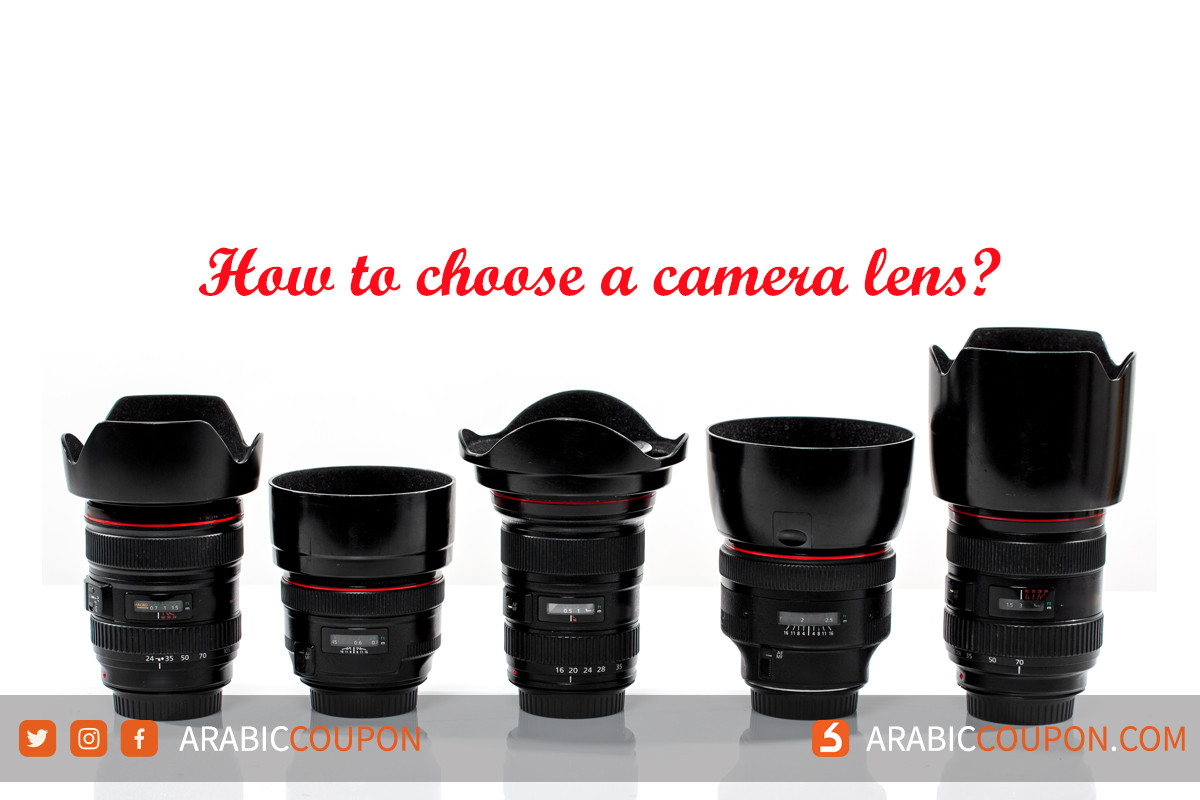How to choose a camera lens?

It may be very expensive to enter the world of photography because of the expensive tools and lenses, but it is worth it when you get high quality photos and the natural dimensions exactly as you want, as there are many types of lenses that each have their own function, uses and focal lengths that distinguish them from others, except It is not a requirement that you buy all these lenses, but it is enough to know what lenses you need to become a professional photographer.
That is why we decided to help you in providing a full explanation of the most important types of lenses that can meet your request and make you experienced and addicted to photography, take a look at these lenses, their uses and features to choose the type that suits you.
What are the main types of camera lenses in Oman?
Zoom lenses
Zoom lens is one of the most important types of camera lenses that you will need in your career in photography, as it will provide you with a variety of variable focal lengths with which you can take professional shots and photos with the ability to zoom in and out with ease.
The zoom lens is incredibly versatile, as it can be used for landscape and wildlife photography, or wedding and portrait photography, as its imaging range ranges from 18 to 200 millimeters or more to help you shoot close-up or from a distance, but these lenses are incredibly versatile. They are heavier and more expensive than most other types.
Telephoto lens
If your zoom lens is not enough to meet your needs, a telephoto lens can be the perfect solution for you, as this type of camera lens is used to capture distant scenes with the best quality as if they are close to you, thanks to its large lenses that range Its range is from 100 to 600 mm, and may reach 800 mm as well.
If you are a fan of observing animals and camping, or photographing the sky and stars, the telephoto lens will be a real treasure for you, as it is a good choice for photographers who are unable to get close to their targets, and it is also sometimes used for artistic purposes for its ability to create focus points Contrasting between the foreground and background, in addition to the possibilities of zooming in and out.
Fixed / Prime lens
The Prime Lens is the classic style known to cameras since its invention, as it has a fixed focal length lens, that is, it has a specific angle of view that can only be changed by moving the camera, and it is not possible to activate the zoom in or out functions, and the only way to get close From the element you want to shoot is to get physically close to it, when you have to back off when you take more elements or shoot the whole scene.
A prime lens has a single focal length, in other words, it can be set to deliver a specific type of photography, unlike a versatile zoom lens, so a prime lens generally produces higher quality images than zoom lenses, but will have to Then you need to know the appropriate focal range for shooting your event.
Macro lens
If you have ever seen a picture of a flower or an insect in its fine detail and wondered how to take this professional photo, the answer will most likely be the “Macro Lens” that helps focus on the subject when a picture is taken very close, as this lens magnifies small things Too much to make them appear life-size or larger in detail that can't be obtained with the naked eye or other lenses. A macro lens comes in a variety of focal lengths from wide angle to telephoto, where the focal length of the lens determines your field of view.
Wide Angle lens
Many photographers found themselves in need of more advanced lenses in order to give them the opportunity to deal with many elements in the image, and for this reason the wide-angle “Wide-Angle Lens” was invented, which offers the possibility of capturing the scene at an angle wider than what the eye sees, through its long lenses Its short focal length and wider field of view than a regular lens make it great for architectural, landscape, and many other subjects.
The wide-angle lens also allows the "Wide-Angle Lens" to get as close to the subject as possible, without excluding the important elements of the scene, so viewers feel that they are seeing the view with their eyes and not through photographs.







